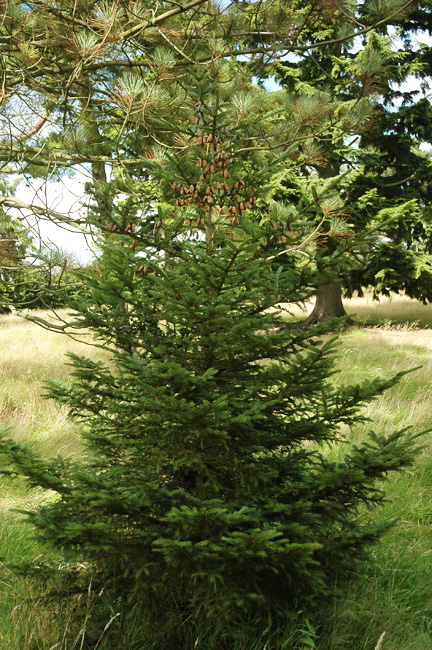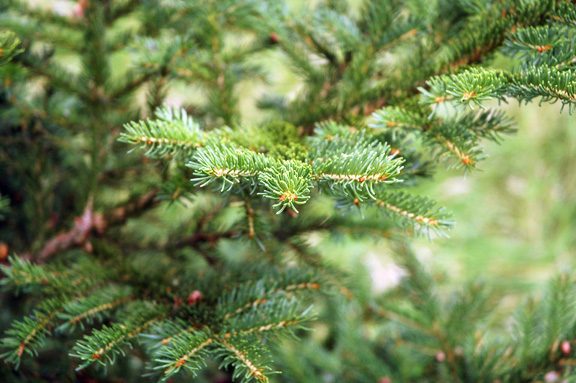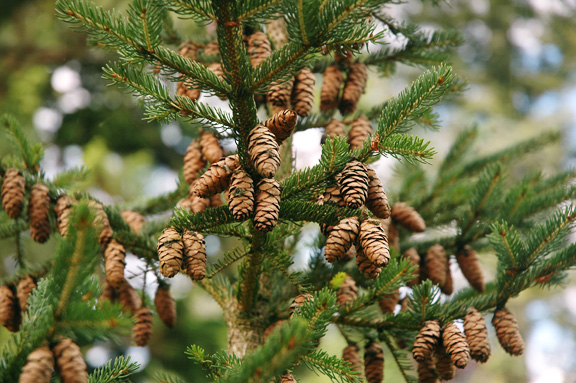| General Description | A tree that can tolerate wet sites and partial shade. Reaches maximum potential where humidity and rainfall are high. Grows to 27 metres but has a slow growth rate. |
| ID Characteristic | Forming a broad conical shape with lustrous bright dark-yellowish green needles. Has a red stem which has smooth scales but is otherwise rough textured. |
| Shape | Narrowly conic, large broad crown and has angled branches. |
| Propagation | Collect seeds from this tree in late October when the cones drop. Seeds require cold moist stratification for 90 days. Seeds shouldn't dry out and should be put in a single pot to germinate. |
| Cultivation | Likes moisture at root zone, if planted in dry areas it must be in deep rich soils that will retain moisture, deep mulch will also help. It naturally occurs in wet, cold, shallow soils with a PH of 4-6. |
| Pests | Spruce budworm is one of the most voracious forest insects which eat the buds and new needles. Susceptible to blight on the tip of the needles but no serious diseases to be concerned with in ornamental planyings. Attention should be paid to its cultu |
| Notable Specimens | Canaan valley, West Virginia and The Great Smoky Mountains National Park. |
| Habitat | Grows in low swampy areas but can be occasionally found on upland areas. |
| Bark/Stem Description | Grayish brown on the surface of the bark and a more reddish brown beneath with fine flaky patches. Coarse feel to it but has a smooth waxy sheen but rough textured due to the scales on its stems. |
| Flower/Leaf Bud Description | Shinny reddish brown outer scales that extend sometimes. Buds surrounded by small forward pointing needles. |
| Leaf Description | Needle like evergreen lraves ranging from 1 to 2 cm long with sharply pointed apex and four-sided curving upward. Each needle on the stem is called sterigma. Bright dark-yellowish green needles. |
| Flower Description | Monoecious, with the male flowers cylindrical reddish but turning yellow-brown and the females purplish green. |
| Fruit Description | Colour of the fruit is a chestnut brown oval cone and the size ranges from 3 to 3.5 cm long. The seed is collected in autumn for replanting in reforestation projects with cones usually droping their first winter. |
| Colour Description | The needles are yellowish green and the new twigs have a reddish tinge the first year, grayish brown bark. The overall colour of the tree is a dull green. |
| Texture Description | A medium testured tree although unkempt in form. |


